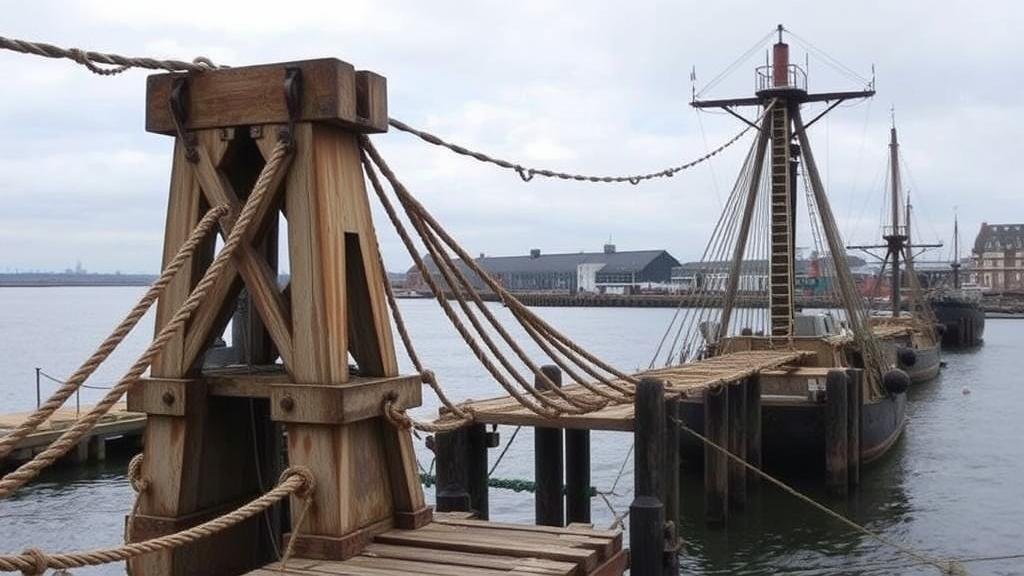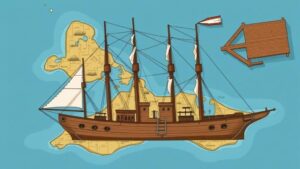Tracing Early Ropewalk Locations for Nautical and Industrial Relics
Tracing Early Ropewalk Locations for Nautical and Industrial Relics
The significance of ropewalks, historically recognized as essential components of both nautical and industrial operations, cannot be overstated. These locations were critical in the production of ropes used for sailing ships, as well as for various industrial applications ranging from construction to agriculture. This article aims to explore the geographical distribution, historical context, and the archaeological remains associated with early ropewalk sites. By tracing these locations, we can better understand the evolution of maritime technology and industrial practices in particular locales.
The Historical Context of Ropewalks
Ropewalks originated in the medieval period, gaining prominence during the Age of Sail (approximately the 16th to 19th century). The demand for durable cordage led to the establishment of ropewalks near maritime ports and cities. According to historical records, the first documented ropewalk in England was established in the early 16th century. Cities like Portsmouth, London, and Bristol became central to rope production due to their strategic maritime locations.
Geographical Distribution of Ropewalks
Ropewalks were often sited in proximity to waterways, which allowed for easy transportation of the finished product and raw materials. Documented examples of early ropewalk locations include:
- Portsmouth, England: Established in the late 16th century, Portsmouths ropewalk became one of the largest in England.
- Salem, Massachusetts: By the 17th century, Salem had developed a significant rope industry to support its whaling and shipbuilding activities.
- Charleston, South Carolina: Charleston’s ropewalks were particularly prominent during the colonial period, serving both local and transatlantic shipping needs.
Industrial and Nautical Applications of Rope
Ropewalks were not merely about rope production; they were integral to the functionalities of various industries. Nautically, different types of ropes were produced, each serving a unique purpose:
- Hawser: Strong cable used for mooring and towing ships.
- Shrouds: Ropes used to support the masts on a sailing ship.
- Furling lines: Used for securing sails when not in use.
Also to nautical applications, ropes produced in these facilities were used in agriculture, construction, and for various industrial machines, illustrating the multi-faceted nature of ropewalk outputs.
Archaeological Evidence and Preservation
The remnants of early ropewalks provide valuable insights into their design and operation. Archaeological studies have uncovered artifacts such as:
- Rope-making tools: Spinning wheels, twisters, and other equipment used in the rope-making process.
- Manufactured ropes: Samples of ropes found in various states of preservation.
In places like Portsmouth, extensive archaeological excavations have documented the layout of these facilities, revealing long, narrow structures designated for rope production. Research indicates that these sites not only reflect industrial practices but also the socio-economic dynamics of their respective communities.
Challenges of Tracing Ropewalk Locations
While the importance of ropewalks is clear, tracing their exact locations poses several challenges:
- Urban Development: Many historical ropewalk sites have been repurposed or destroyed due to modern urban expansion.
- Lack of Documentation: In some regions, insufficient historical records hinder precise location identification.
Preservation efforts are essential to ensure that what remains of these historical sites is recognized and valued. Collaboration between historians, archaeologists, and local communities can foster greater awareness and preservation initiatives.
Conclusion
Tracing early ropewalk locations is essential for understanding the technological and economic history of maritime and industrial practices. Documented evidence indicates these facilities played a crucial role in supporting both local economies and naval operations. By continuing to explore and preserve these sites, we honor our maritime heritage and contribute to the broader narrative of industrial evolution.
Future research initiatives should prioritize interdisciplinary approaches that draw from history, archaeology, and industrial heritage studies to fully illuminate the legacy of ropewalks in our industrial and nautical past.



